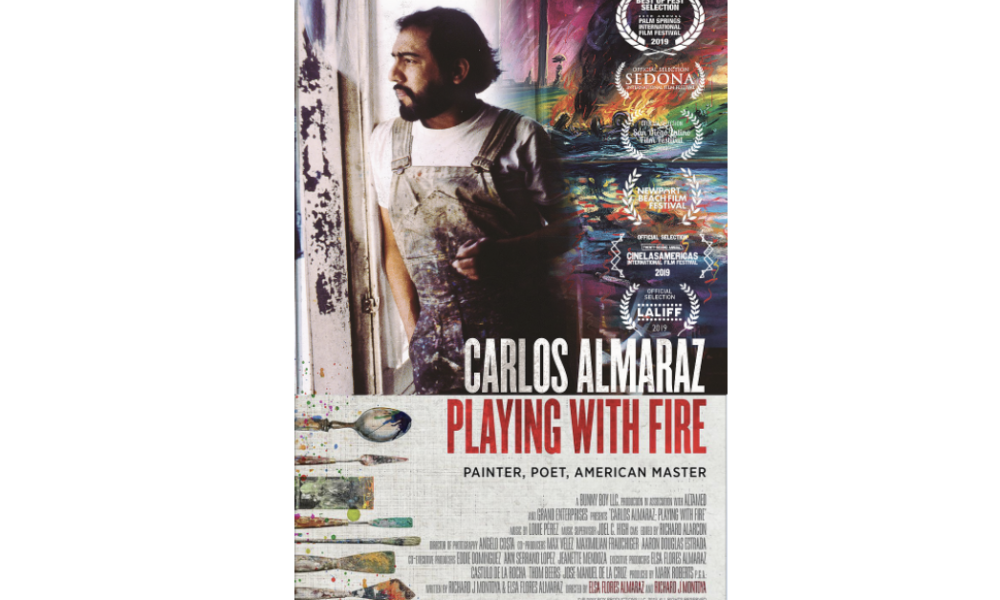With hopes of raising awareness for her late husband, Elsa Flores Almaraz visited Long Beach State’s University Theater for the screening of “Carlos Almaraz: Playing with Fire.”
“When he passed, I had made a promise that he wouldn’t be forgotten,” Elsa said, who has taught art and has a piece in the Kleefeld Contemporary Museum’s B.A.T. State III Exhibit.
Described as a legendary painter, Carlos captured attention from around the nation with his consistently transformative artworks. As part of Los Four, he became a beloved leader in the Chicano Art Movement.
“Carlos and Los Four defined the term, ‘Chicano Art,’” said Andrea Cerna, who worked at the Museum of Latin American Art when it hosted the first Chicano art exhibition.
Born in Mexico City in 1941, Carlos showed creative interest early on while studying animated films. For part of his adult life, he lived in New York City, where he gained inspiration in the field.
But his lifestyle would take a toll on him.
While living freely in the big city, Carlos’ experimentations with drugs leveled to a dangerous extent. He committed himself into a hospital for over two months and then got hospitalized again for 42 days for acute pancreatitis. He was a 29-year-old alcoholic.
“He wanted everyone to know what he went through,” Elsa said.
Los Four and Carlos’s involvement in the Chicano movement began after he left New York. The group – which consisted of Gilbert Sanchez Lujan, Roberto de la Rocha and Frank Romero – was instrumental in bringing the art movement to the forefront when they had their exhibit showcased in different museums.
“There was a time when the Museum of Latin American Art was not allowed to show Chicano art,” Cerna said. “When they finally accepted it for different reasons, it was very moving to see these four artists’ works.”
But eventually, Carlos’s transformative tendencies led him to venture out of Los Four.
“He was criticized for leaving,” Elsa said. “It was a big loss for the community.”
The painter would produce a collection of different works before his death from AIDS in 1989. Despite his widespread success, his most significant accomplishment was the impact he made in the Chicano movement.
“[Chicano art] is a self-identity,” Cerna said. “It represented their politics, their culture, their surroundings…Although [Carlos] was famous, [Chicano art] was only accepted in a narrow part of the art world.”
It was his passion that made Carlos so prominent with his works, according to some.
“He never changed himself for anybody,” Cerna said. “It’s almost hard to be surrounded by his work in a room because it’s so vibrant.”




